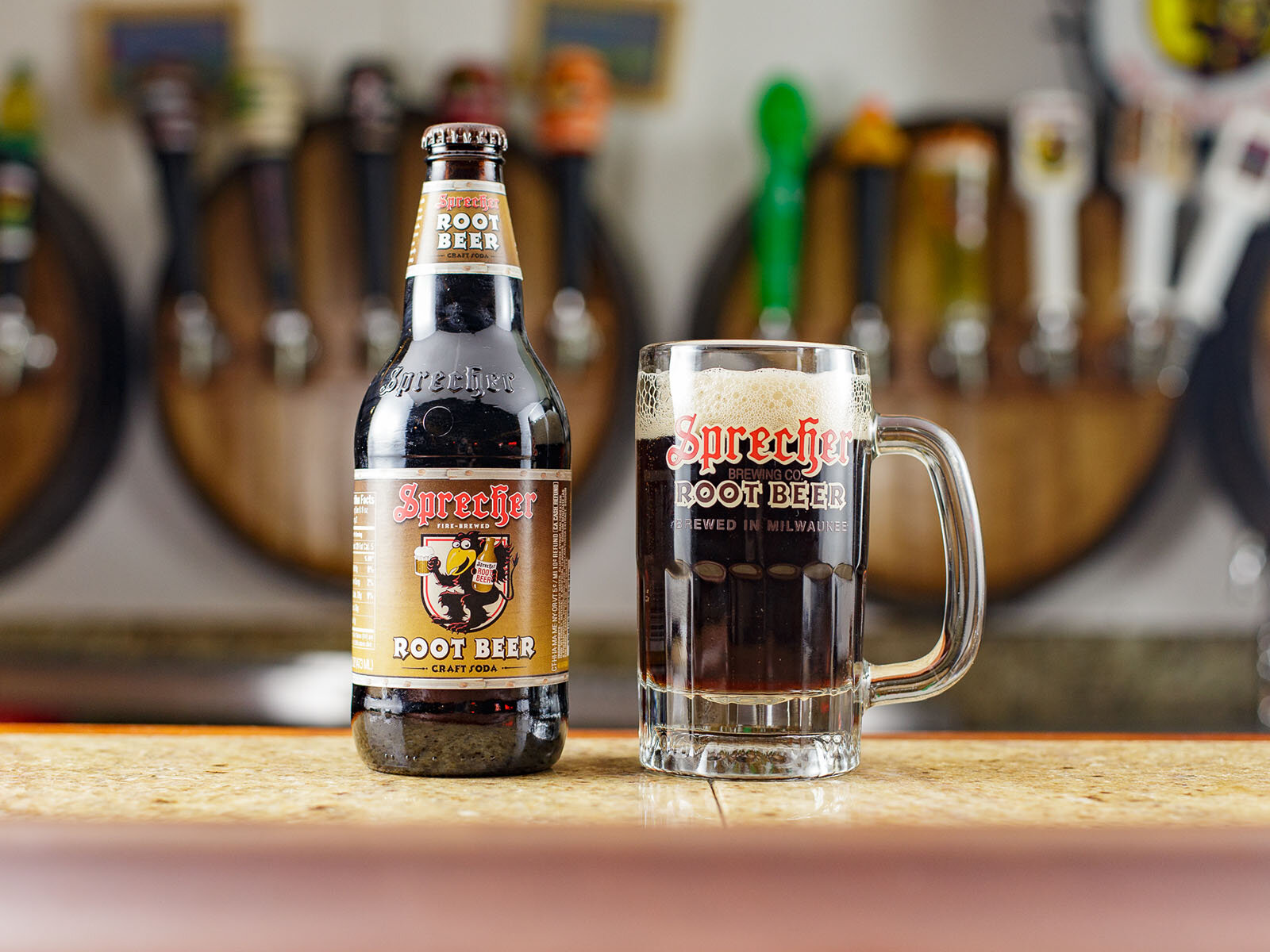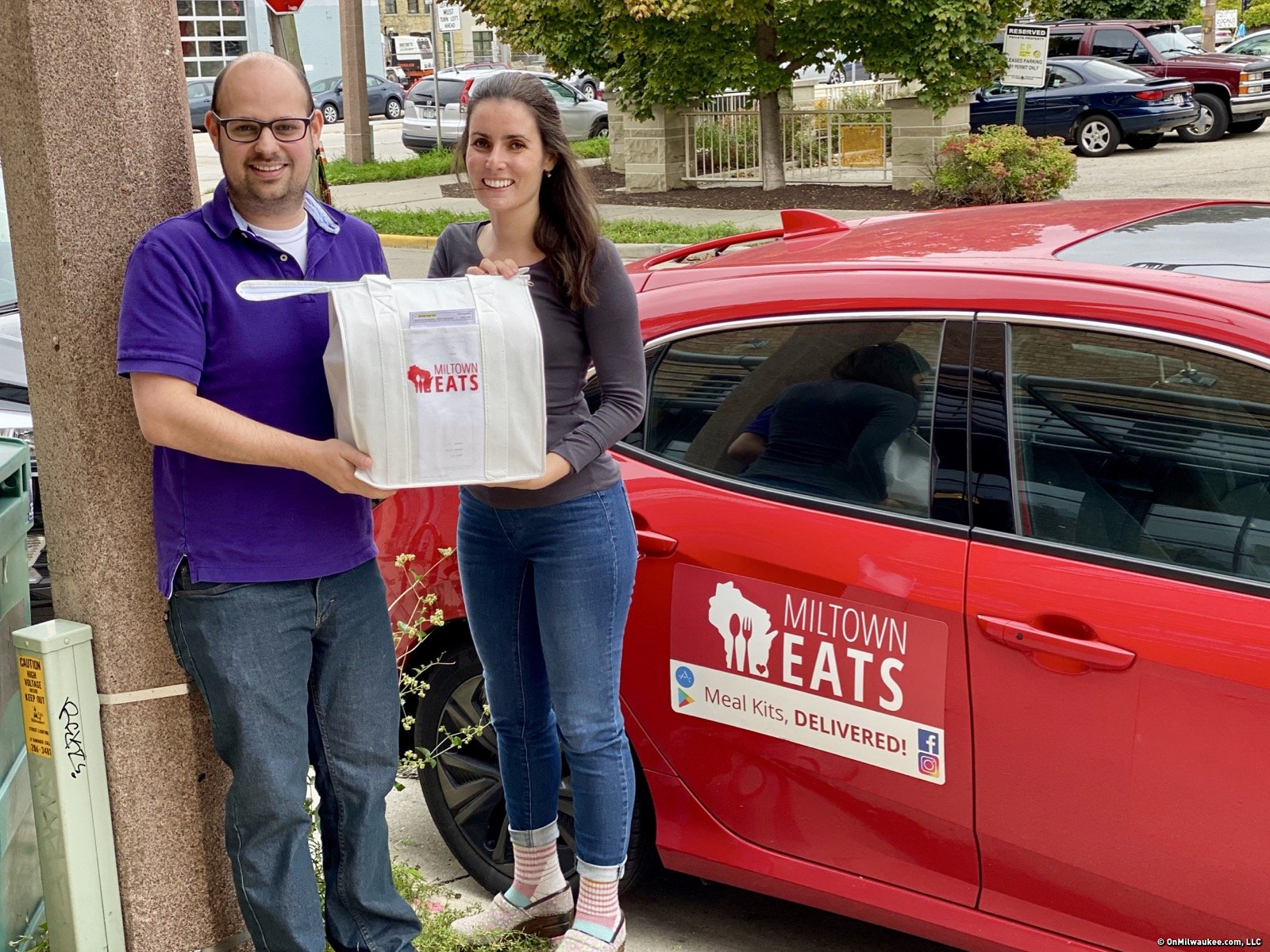Sweet potatoes and avocado oil are big right now and the brand that makes the best non-GMO sweet potato chips fried in avocado oil is located in an unassuming business park building in the Milwaukee area.
Jackson’s, which has an interesting backstory, has been growing quickly and expanding at its Muskego facility to meet demand. For anyone that’s paid attention to the brand, it seems obvious.
Jackson’s quickly became the third best-selling snack food nationally at Whole Foods and is now in Kwik Trip, on Amazon, in Costco, at Target and at smaller venues like Outpost and even tiny Torzala Brewing in Bay View.
“One of the keys to our success is that we've got very unique selling points in terms of sweet potatoes and avocado oil, and we're the only brand that does that,” according to CEO James Marino. “And it's fairly easy to communicate that to the consumer in what's a high impulse category.
“This concept of avocado oil and non-seed oils, the consumer is getting more and more educated on what that means.”
Jackson’s also uses coconut oil for some products, and its manufacturing facility is vegan and free of the nine biggest allergens.
Jackson’s has about 80 full-time employees and about 20 temp workers, too, Marino tells me. The day I visited, the company was hosting a job fair.
“We're just continuing to grow and grow and grow,” Marino says. “In January 2022 we launched (the brand) by June 2023, we were out of capacity already from this brand new plant. We launched the expansion project that we started in August of last year and completed in December within this building, and that tripled our capacity. By April of this year, we were brushing up against it.”
So, Jackson’s has another small expansion in the works that by September should add 18 percent to its capacity. Another much larger expansion is planned for next summer, which would again triple the company’s capacity.
Marino hopes that expansion can all occur at the current site.
“If not, we're going to have to explore another location, something else in the area,” he says.”
Though Marino has experience in food startups – he and his wife Jenny founded Angelic Bakehouse, which they later sold to T. Marzetti Company – he did not start Jackson’s. Instead, it was launched by Megan and Scott Reamer in their kitchen.
“When our son Jackson was diagnosed with a rare autoimmune disorder, our top priority was to find ways to ease his symptoms,” the Reamers on the Jackson’s website. “After much trial and error, we discovered that a high-fat, low-carb diet – with an emphasis on coconut oil and other premium fats – greatly improved both his health and quality of life.”
They began making sweet potato chips with coconut oil at home and sharing them, then selling them under the name Jackson’s Honest, and ultimately landing on television’s “Shark Tank.”
Suddenly, they found themselves overwhelmed by demand they were unable to meet.
Enter James Marino, who had sold Angelic in 2016.
“The story of the company that exists today was an acquisition of two companies,” Marino says. “It started the opportunity to buy in the assets of an orphan plant from Hershey's that was in the Chicago area. After purchasing those assets, we looked for a brand to buy once we had this chip making capability, and that led us to Jackson's Honest.
“The whole core team here is from Wisconsin and all the connections I have in food manufacturing and the food business in general is all Wisconsin based.”
After we chatted in his office, Marino showed me around the plant. We started, well, at the beginning, in what’s called “the potato room.”
There, giant totes full of sweet potatoes that arrive by truck, typically from the southeast.
“Two main regions for growing are southeast from North Carolina, down through northern Alabama and northern Mississippi, and then California grows a lot of sweet potatoes,” Marino says, noting that Jackson’s sources most of its sweet potatoes from northern Mississippi.
“It's a great quality sweet potato, and it's the shortest, shortest distance.”
When I jokingly ask if he plans to plant fields of sweet potatoes in the fields near the facility, he laughs, but says, “No, but there are white potato growers in the state that can grow sweet potatoes. So we're talking to them about that.
“Probably something that definitely would not be this season, but something we could put in place for next growing season.”
The potatoes move along a conveyor up to a station where some workers chop the largest sweet potatoes into smaller pieces that the slicers in the next room can better handle.
That next room is the fry room, where the potatoes continue along a conveyor that diverts some into hoppers at a series of giant fryers.
At the bottom of each hopper is the slicer, so we see whole potatoes (or the chunks the big ones have been cut into) going in the top and down below we see chip-sized slices conveyed into the hot oil.
There are six kettle fryers in which chips are made in small batches (as opposed to continuous fryers where chips are constantly going in, running along what Marino says is like “a long, lazy river” and constantly coming out the other end).
Four fryers were purchased from Hershey’s and two newer models, specially designed for Jackson’s. More of these latter versions – which have double the capacity of the Hershey’s-era ones – are currently on order for the planned expansion.
Chips spend about six minutes in the fryer where they pass through distinct heating zones programmed via computer.
Oil arrives at the plant in tanker trucks, typically two a week, that each carry 47,000 pounds of oil each.
Most of the oil that leaves the plant goes out with the product, because Jackson’s reuses the oil.
“We work hard to have zero waste,” says Jackson’s Vice President of Operations, Luca Martinez. “So we have filtration, we have a filtration station over there that will take our used oil and get it back into a state where it can be used again.”
The two new fryers make that process easier as they have automated systems to remove debris – like the stringy bits you’ve surely seen on sweet potatoes, for example – from the oil.
“You get more with sweet potatoes than you do white potatoes,” Marino says, “and they accumulate in the fryer and degrade the oil more as they sit there because they keep getting cooked and cooked and cooked. So in our new fryers, they don't degrade the oils much.
“These first four fryers we take down about every 30 hours to switch the oil out. We don't have to do that more than once a week (on the new ones), 120 hours, which is a huge thing. It's huge because we take 'em down, we take 'em down for four hours.”
Interestingly, Marino and Martinez say that the best tasting chips don’t necessarily come from 100 percent virgin oil.
“To make great kettle chips you need to create the perfect blend of new and used oil,” Marino says. “There's new oil, there's used oil that's good, used oil that has a free fatty acid level below a certain amount. And then there's oil that becomes too old for the oil that's too old. Most operations would haul that off into some form of waste. We have a process to refilter that oil and we can reconstitute it with 1/10th of a percent of virgin oil.
“A lot of what we're doing here is monitoring oil levels because the use oil is good to a certain point and then it needs to be treated. But if it's all new oil, it doesn't make good chips, they all stick together. So you need this combination of new and used.”
Martinez says that the benefit comes mostly in terms of texture.
“(For) the overall crunch, absolutely the mix (is best) for sure,” he says. “What I value most is the overall feel, and so that's why we mix the oil as appropriate to make it the best possible.”
Next, we head around to the flavoring and packaging area, which is around the other side of the fryers, from which the chips emerge on conveyors. Along the next conveyor they pass through a process that filters out small bits.
Marino says that at this point all of the sweet potato chips are exactly the same. The change occurs once they are conveyed up to an elevated area that diverts chips to a number of machines that add the flavorings, all developed and created on-site from natural ingredients.
At each station, the chips enter a drum where the chips are gently tumbled with the flavorings that are created in the nearby lab, which also runs daily quality tests on random bags of chips from the various production lines.
From each drum, flavored chips are portioned out for bagging.
Then, the chips head down to the packaging machines which are situated right beneath the flavoring lines and they are put into bags which arrive as giant rolls of film. The bags are created from the film as part of the packaging process.
Oxygen in the bag is removed and replaced with nitrogen, Martinez says, to maintain freshness.
The bags then head over to the adjacent warehouse and shipping area, ready to head out to consumers.
The chips, which come in a variety of flavors – and now some are arriving with ridges! – are packaged in 1-ounce snack sizes, 5-ounce bags and multi-packs.
Because Jackson’s specializes in sweet potatoes – though you will see some white potato chip products, too – they’ve paid close attention to the distinctive requirements of that star ingredient.
It’s perhaps the key to Jackson’s success (along with the reputations that sweet potatoes and avocado oil are currently enjoying, of course).
“Anybody who's previously made sweet potato chips didn't put out a great version,” says Marino. “We understand why, because we specialize in sweet potato chips. If you're a white chipping operation and that's all you've done, and then you do sweet potato chipping, it requires focus and specialization.”
Sweet potatoes have a different shape and size than white potatoes, for example, says Marino, and the fry curve for the white potato doesn’t really work for sweet potatoes. Also, many of the previous makers didn’t explore different flavor profiles for sweet potatoes.
“In our flavor innovation, we really look at flavors that pair well with sweet potatoes, but still fall into the insights of flavor that consumers want,” says Marino.
“These other companies that have done it are so into white potato chips and were just dipping their toe in the sweet potato chip market that they never got to the point of really just kind of applying their techniques of white potatoes to sweet potatoes.”
Born in Brooklyn, N.Y., where he lived until he was 17, Bobby received his BA-Mass Communications from UWM in 1989 and has lived in Walker's Point, Bay View, Enderis Park, South Milwaukee and on the East Side.
He has published three non-fiction books in Italy – including one about an event in Milwaukee history, which was published in the U.S. in autumn 2010. Four more books, all about Milwaukee, have been published by The History Press.
With his most recent band, The Yell Leaders, Bobby released four LPs and had a songs featured in episodes of TV's "Party of Five" and "Dawson's Creek," and films in Japan, South America and the U.S. The Yell Leaders were named the best unsigned band in their region by VH-1 as part of its Rock Across America 1998 Tour. Most recently, the band contributed tracks to a UK vinyl/CD tribute to the Redskins and collaborated on a track with Italian novelist Enrico Remmert.
He's produced three installments of the "OMCD" series of local music compilations for OnMilwaukee.com and in 2007 produced a CD of Italian music and poetry.
In 2005, he was awarded the City of Asti's (Italy) Journalism Prize for his work focusing on that area. He has also won awards from the Milwaukee Press Club.
He has be heard on 88Nine Radio Milwaukee talking about his "Urban Spelunking" series of stories, in that station's most popular podcast.







